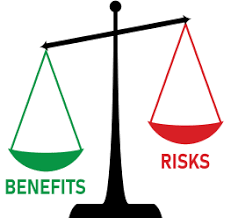Child's Play-Balancing Risk and Benefit assessments at Canopy Forest School
- Emma Clode

- Jul 15, 2021
- 3 min read

“One of the biggest dangers facing our children and their play is our imaginations. As adults, we are incredibly gifted at the art of worrying, 99 per cent of which will never come into fruition. We see all the possible scenarios of “what could happen” and then we deem the situation as being too risky. Are we passing our worries and fears onto the children in our settings?”
Tanya Valentine
Play requires an element of risk it is our inbuilt teacher that allows us to experiment, make decisions, overcome obstacles, and interact with others. It is through play that we strengthen our independent thinking skills, and it is a device that all young animals use to learn about the world around them. If you watch any young animal, you will quickly realise how important play is to their survival, it is our innate education system that is more attuned to what we need than any National Curriculum.
Forest School views play as a process not a product, it is dynamic, imaginative and belongs to children and young people. It is their way of daring to learn something new. It is play that makes a baby step away from a secure base, take their first steps and move from their trusted adult. It is in this way that we enable, facilitate, and provide risky or challenging play to Forest School the participants. Leaders learn to wait, watch, and know when to step in and when to step back. Slowly at the child’s directed pace more challenging opportunities are available. Consequently, at Forest School we carefully and skilfully allow the students to show us what skills they want and need to develop, and this is achieved through observations and reflective learning.
Risk plays an essential role in child development. Encountering certain types of risk helps children learn how to manage hazards, builds resilience, self-reliance, confidence, independence, and creativity. The long-term benefits of risky encounters help to build character, personality, physical strength, core muscles, language, maths and it is also argued that it is an essential part of living a meaningful and satisfying life.
Sadly, however in today’s world we have become an increasingly risk averse society. This is making physically active, playful risk taking ever more difficult for children to practice. There are many reasons behind how and why these anxieties about risk in childhood is growing: health and safety, legal and public policy, fear of being sued, technology, intensive parenting, media, and stranger danger to name just a few. Our attitudes towards risk taking have changed dramatically in the last century.
“A number of risk deficits now pervade our society. In particular there is a trend to remove risk from children’s play. The absence of childhood risk is leading to many problems both directly and indirectly. Problems such as obesity, mental health, lack of independence, and a decrease in learning, perception and judgement skills within our children have been cited in the literature.
For the child, the exploration and taking of managed risk is critically important for healthy childhood development. Learning, perception and judgement will be impeded if the child is not exposed to situations that involve an element of risk.” (Abstract, Eager, 2011)
Forest School teaching uses sensible and balanced health and safety procedures. Practitioners take a reasonable and proportionate approach to safety which accepts a degree of risk. Leaders take their responsibility for the safety of the students seriously and take heed of all their legal duties, risk is effectively managed and is seen as not only inevitable but positively desirable. Benefit and risk assessments are made for all activities and an in-depth knowledge of the process of learning these skills is always used and applied.
Our understanding of risk taking in Forest School does not just apply to physical risks but also social and emotional ones as well. Our aim in the programme is to support, facilitate and provide opportunities and because it is a child-led curriculum we allow the students to guide us, and we watch and observe them as they explore and play.
I would like to leave you with the wise words of Magda Gerber:
"Education begins the moment that we see children as innately wise and capable beings."
(https://www.magdagerber.org/, accessed 15/7/21)
References
Edgar David, Risk Deficit Disorder, 2011, Sydney University
Gerber Magda, (https://www.magdagerber.org/, accessed 15/7/21)
Valentine Tanya, https://curiate.co.nz/blog/post/making-the-most-of-risky-play accessed 15/7/21












Comments